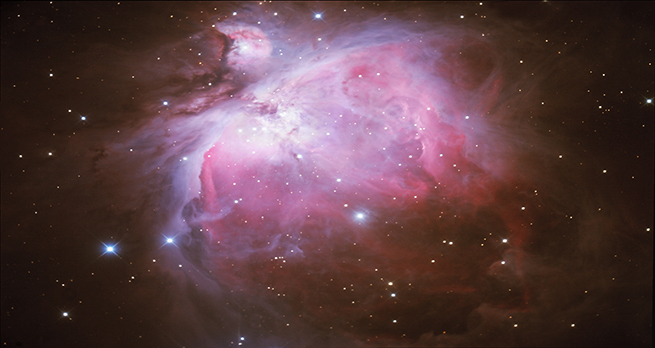Orion Glossary
meteorExtra-terrestrial object that is observed by the electromagnetic radiation it emits as it enters the Earth's atmosphere. 'Shooting stars' are visible meteors. |
meteoriteAn extra-terrestrial rock (generally a fragment of an asteroid) that has fallen to the Earth’s surface. |
near Earth asteroidAn asteroid that has an orbit that brings it close to the orbit of the Earth (defined as any asteroid that comes within 1.3 astronomical units from the Sun). Abbreviated to NEA. |
neon burningThe process by which massive stars fuse a neon and helium nucleus together to produce a magnesium nucleus, releaseing energy in the process. |
neutron starWhen a high-mass star runs out of nuclear fuel, it will undergo a type II supernova explosion and its core will collapse to form a neutron star. A neutron star has a mass similar to that of the Sun, but a radius of only about 10 km. A neutron star is supported against gravity by an effect of quantum physics known as neutron degeneracy pressure. See also white dwarf, black hole. |
nuclear fusionThe fusing together of two atomic nuclei to make a larger nucleus. There is a decrease in the total mass of the nuclei in a fusion reaction, so this process results in the release of large amounts of energy, according to Einstein’s equation E = mc2. |
nuclear reactionsProcesses in which two or more nuclei are involved, resulting the creation of different nuclei from those originally present. See also nuclear fusion. |
nucleosynthesisThe process by which the nuclei of elements (other than hydrogen) are formed. There are believed to be three sites (or epochs) where (or when) nucleosynthesis occurs (or has occurred). Light nuclei, such as deuterium, helium and lithium, were formed in the early Universe when the Universe was between about 100 s and 1000 s old. Nuclear fusion inside the cores of stars is responsible for the formation of more helium nuclei, and also for the formation of other nuclei up to those with a mass around that of iron. Supernovae explosions are responsible for the formation of more massive nuclei. |
Oort cloudA spherical cloud of icy bodies surrounding the Solar System and extending up to one-third of the way to the nearest star. It is sometimes called the Öpik-Oort cloud. |
oxygen burningThe process by which, towards the end of their lives, massive stars fuse oxygen nuclei together to form silicon. |
